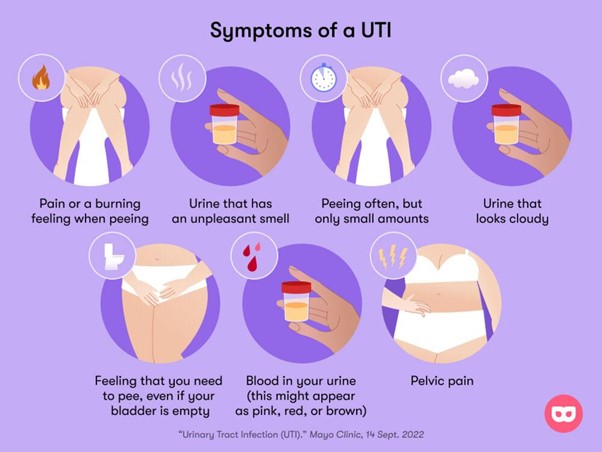A client has come to the orthopedic clinic for a follow-up appointment 6 weeks after fracturing his ankle. Diagnostic imaging reveals that bone union is not taking place. What factor most likely contributed to this complication?
Inadequate immobilization
Venous thromboembolism
Inadequate vitamin D intake
Bleeding at the injury site
The Correct Answer is A
A. Inadequate immobilization: Proper immobilization is essential for fractured bones to heal correctly. Immobilization, often achieved through casts, splints, or other orthopedic devices, stabilizes the broken bone fragments, allowing them to fuse back together. If the immobilization is not sufficient or if the patient doesn't follow the prescribed immobilization protocol, there can be excessive movement at the fracture site, hindering the healing process.
B. Venous thromboembolism: Venous thromboembolism (VTE) refers to the formation of blood clots in veins, usually in the legs (deep vein thrombosis) that can travel to the lungs (pulmonary embolism). While VTE is a potential complication after a fracture, it is not a direct cause of delayed bone union.
C. Inadequate vitamin D intake: Vitamin D is essential for bone health as it helps the body absorb calcium, which is crucial for bone formation and maintenance. Inadequate vitamin D levels can weaken bones and impair the healing process, but it's not a common cause of delayed bone union unless there are severe deficiencies or underlying medical conditions.
D. Bleeding at the injury site: Bleeding at the injury site occurs immediately after the fracture and is a natural part of the body's response to injury. While excessive bleeding can lead to complications, it is not a likely cause of delayed bone union six weeks after the injury. In the early stages of healing, bleeding is replaced by the formation of a hematoma, which eventually transforms into a callus and aids in the bone healing process.
Nursing Test Bank
Naxlex Comprehensive Predictor Exams
Related Questions
Correct Answer is D
Explanation
A. Increased urinary output: Phenazopyridine (Pyridium) does not directly impact urinary output. Its primary function is to provide relief from urinary pain, burning, and discomfort associated with urinary tract infections (UTIs) or other urinary conditions. It does not affect the amount of urine a person produces.
B. Decreased WBC's: Phenazopyridine does not directly influence white blood cell count (WBCs). WBC count is an indicator of the body's immune response and is typically used to assess the presence of infection. Phenazopyridine provides symptomatic relief but does not affect the underlying infection or the body's immune response to it.
C. Increased uric acid: Phenazopyridine does not affect uric acid levels. Uric acid is a waste product that is excreted by the kidneys. Elevated uric acid levels can be associated with conditions like gout, but Phenazopyridine does not have any direct impact on these levels.
D. Decreased bladder pain/spasms: Phenazopyridine is intended to relieve symptoms such as bladder pain, spasms, burning sensation, and discomfort experienced during urination. Therefore, the effectiveness of Phenazopyridine is indicated by a reduction in these symptoms. If the patient reports a decrease in bladder pain and spasms, it suggests that the medication is working to alleviate the discomfort associated with urinary tract issues.
Correct Answer is A
Explanation
A. Urinary tract infection
The symptoms described, including recent mental status changes and periods of incontinence, are suggestive of a urinary tract infection (UTI) in an elderly individual. UTIs are common among older adults and can cause a variety of symptoms, including confusion, which is often the primary manifestation in the elderly population. Other symptoms can include urinary urgency, frequency, and incontinence.
B. Acute kidney failure - While acute kidney failure can cause changes in urination and mental status, it is less likely to be the primary cause of these symptoms in this scenario. UTI is a more common and immediate concern given the symptoms described.
C. Septic shock - Septic shock is a severe condition that occurs when an infection leads to a life-threatening drop in blood pressure. While septic shock can cause altered mental status, it is a critical condition that often presents with more dramatic symptoms and requires immediate intensive care management. The symptoms described are more suggestive of a UTI.
D. Urinary stasis - Urinary stasis refers to the slowing or cessation of urine flow. While urinary stasis can contribute to the development of UTIs, it is not a condition that would cause sudden and acute mental status changes and incontinence on its own. UTI is a more likely cause of the symptoms described.

Whether you are a student looking to ace your exams or a practicing nurse seeking to enhance your expertise , our nursing education contents will empower you with the confidence and competence to make a difference in the lives of patients and become a respected leader in the healthcare field.
Visit Naxlex, invest in your future and unlock endless possibilities with our unparalleled nursing education contents today
Report Wrong Answer on the Current Question
Do you disagree with the answer? If yes, what is your expected answer? Explain.
Kindly be descriptive with the issue you are facing.
